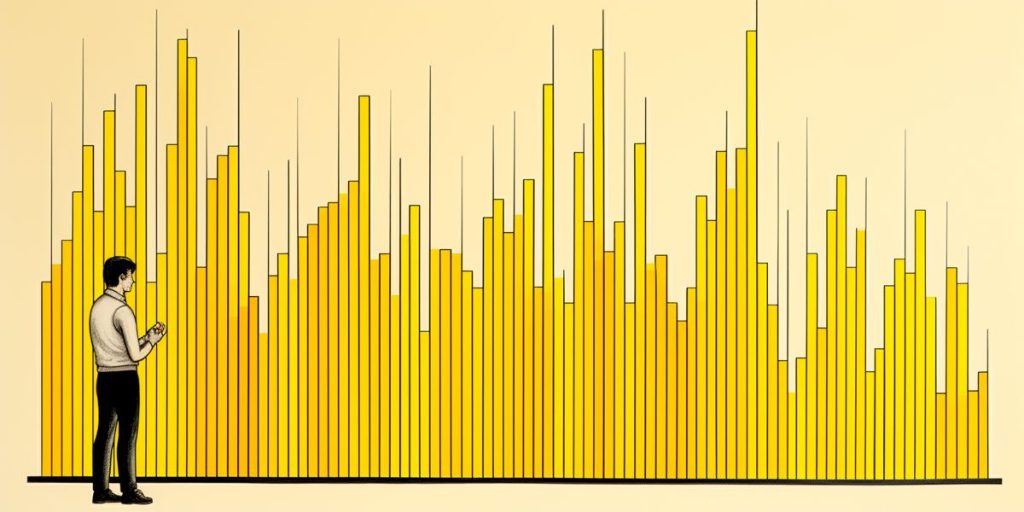The European Central Bank (ECB) advises maintaining bank buffers amid an economic slowdown, with Vice President Luis de Guindos at the forefront. The ECB’s strategy focuses on interest rate hikes to control inflation and emphasizes the importance of remaining vigilant in order to ensure financial stability in the Eurozone.
What is the European Central Bank’s perspective on the current Eurozone economic conditions?
The European Central Bank (ECB), through Vice President Luis de Guindos, advises maintaining bank buffers amid economic slowdown. The ECB’s policy focuses on interest rate hikes to control inflation and emphasizes macroprudential vigilance. With economic growth under 1%, the ECB remains cautious, monitoring the situation and prepared to adjust its strategy to ensure financial stability.
In the face of economic hurdles, the Eurozone’s growth prospects appear to be on a delicate thread. The European Central Bank (ECB) has weighed in on the current financial landscape, with Vice President Luis de Guindos at the forefront, advising against the relaxation of bank buffers designed to fortify the financial system during economic downturns.
Understanding the Counter-Cyclical Buffer
A financial mechanism known as the counter-cyclical buffer has been set in motion by some of Europe’s largest economies. This measure compels lenders to accumulate additional capital during prosperous times. The logic here is straightforward yet profound—amass a reserve when the going is good, so there’s a safety net when the tide turns.
The ECB’s Stance on Current Economic Conditions
Recent declarations by de Guindos paint a picture of an economy that’s not just slowing down, but one that’s barely managing to tread water. The industrial slump has led to a domino effect, with the service sector now feeling the heat. Signs of waning momentum in the labor market—previously a bastion of strength in the Eurozone—are now emerging.
The ECB has taken a firm stance on interest rates, implementing a series of hikes in an attempt to curb inflation and steer it towards the 2 percent target. Despite inflation rates residing below the 3 percent mark, de Guindos has flagged the possibility of an upswing in the coming months, albeit amidst a general trend of disinflation over a more extended period.
Policy Roads Ahead
The ECB’s next steps hinge on a clearer economic picture, expected to come into focus with fresh data in December. This information will be pivotal for reassessing inflation and the necessary policy response. The current narrative from the ECB underscores the importance of maintaining interest rates at their present level for an extended period to exert significant downward pressure on inflation.
International and Domestic Outlook
On the international front, geopolitical tensions and oscillating energy prices continue to shape the Eurozone’s economic landscape. Domestically, countries like Germany and France are setting precedents with their proactive use of financial safeguards. Meanwhile, France intends to bolster its counter-cyclical buffer even further come the new year, with similar ambitions echoed by the Netherlands.
Economic Headwinds and Recovery
The Eurozone’s economic stagnation throughout the year raises questions about the depth and vigor of potential recovery. Expectations are tempered with forecasts suggesting a modest rebound, keeping growth figures under the 1 percent threshold.
Macroprudential Vigilance
De Guindos’ message rings clear: macroprudential authorities are to remain vigilant, safeguarding releasable capital buffers. This approach is deemed essential in ensuring these buffers’ availability should the banking sector’s conditions worsen. It’s a preventive measure, a financial bulwark against future uncertainties.
A Watchful Eye on the Horizon
While the Eurozone navigates through this period of weakened economic activity and cautious monetary policy, the ECB’s directive points to a stance of resilience. Eyes are set on the horizon, with strategic steps being taken to weather the storm and emerge with financial stability intact. The ongoing monitoring and adaptive strategies will thus continue to play a vital role in the Eurozone’s economic narrative.
Additional Information and Services
To stay updated on these developments and more, readers can access a variety of information and services, from emergency and medical services, utilities, and transport details, to insights on Cyprus’s consumer association and more. For those interested in broader content, the Cyprus Mail Newsletter provides a blend of news ranging from local happenings to global events, business and finance updates, sports highlights, and lifestyle trends.
Online Experience and Cookie Policy
The digital experience continues to evolve, and with it, the need for clear cookie policies and usage is paramount. It’s important to understand that cookies play a crucial role in enhancing website functionality and user experience. Visitors to the Cyprus Mail website can find detailed explanations of the types of cookies used, their purposes, and the choices available regarding their use.
- The European Central Bank advises maintaining bank buffers amid economic slowdown.
- The ECB’s strategy focuses on interest rate hikes to control inflation.
- Vice President Luis de Guindos emphasizes the importance of remaining vigilant to ensure financial stability.
- The Eurozone’s growth prospects appear to be on a delicate thread.
- The ECB advises against the relaxation of bank buffers.
- The counter-cyclical buffer compels lenders to accumulate additional capital during prosperous times.
- The Eurozone’s economy is slowing down, with signs of waning momentum in the labor market.
- The ECB has implemented interest rate hikes to curb inflation.
- The ECB’s next steps depend on fresh economic data in December.
- Geopolitical tensions and oscillating energy prices impact the Eurozone’s economic landscape.
- Expectations for economic recovery are modest, with growth figures below 1%.
- Macroprudential authorities must remain vigilant to safeguard capital buffers.
- The ECB is taking strategic steps to weather the economic storm and ensure financial stability.

